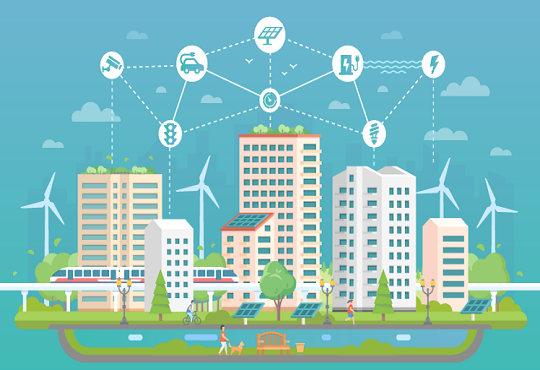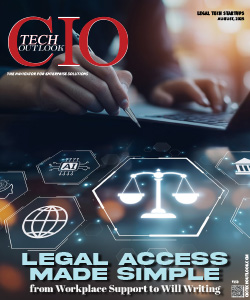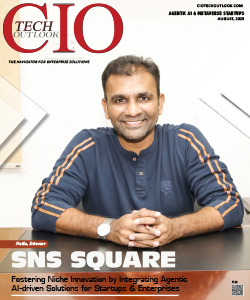How important is the deployment of IoT in Municipal Government
Janifha Evangeline | Saturday, 10 September 2022, 12:10 IST

Although smart cities sound like something of the future in several ways, these are here already & are only getting smarter day by day. The IoT is facilitating residents in connecting with both each other as well as the community services through use of smartphones & other mobile devices, in some municipalities.
The future of Internet of Things looks highly sophisticated since the municipal governments across the globe have started to leverage community network data for improving infrastructure, transportation, public safety as well as the overall quality of life.
One of the major challenges for municipal governments is managing a rise in the array of public services on behalf of a population that is looking for and expecting more and more connected & convenient solutions within communities.
Challenges
One of the most important challenges faced by the ones responsible for the Internet of Thing initiative is the reality that these projects most of the time fall outside the scope of day-to-day work. Hence, municipal officials are forced to prioritize urgent crisis over strategic improvements, often.
Adding to it, most municipalities do not have the proper support for deploying IoT solutions either its owing to a lack of political will or stakeholder support, meaningful Internet of Things implementations are continuing to be delayed.
The 2 most common material obstacles include supporting infrastructure & budget limitations. Securing investment for smart city projects would not be very easy for most municipalities. But, ultimately, the greatest hurdle to overcome is showing how these next-gen solutions can impact urban challenges, positively.
How is 5G playing a significant role in IoT deployments
5G networks play a significant role in facilitating huge implementations of the Internet of Things. Owing to the stunning features such as high bandwidth, fast download speeds coupled with low latency, 5G is anticipated to be a cornerstone for thriving Internet of Things applications.
While IoT devices need a connection to the internet in order to function, Wi-Fi is not always available, especially in poorly defined areas and with a few IoT (Internet of Things) deployments such as those in which speed & bandwidth requirements are low, 4G LTE is sufficient. However, for some implementations, particularly where safety is highly crucial, being able to connect to 5G will be necessary.
Considering the example of traffic management, smart intersections should have the capability for sharing traffic details with other vehicles. This will enable in making traffic patterns safer as well as efficient. Also, roads are not only use case when it comes to public safety, with 5G, taking advantage of advanced technologies such as Virtual Reality, can become more & more possible.
The future of IoT deployment in municipal government
The Internet of Things is the technological backbone of smart cities. Irrespective of how simple or elaborate their interconnectivity would be, IoT-enabled devices make use of sensors in order to constantly gather data that is later sent to a central platform for the analysis process. To thrive, IoT-connected cities ask for more modern networking connectivity such as 5G in order for the devices within the ecosystem to communicate with each other quickly & efficiently as well.
While the deployments of the Internet of Things in the government segment applications are ramping up with 4G LTE, new urban network platforms are developed via connected street lights. Modern urban energy systems are originating with the help from smart meters & smart grids as well. And, hence the most important development is in segments such as transportation & mobility, and areas that continue to change via digitization, electrification & automation.
Real world instances of Internet of Things in smart cities are endless, practically. San Diego, deployed a 4-phase initiative for installing smart stop lights which share data for decreasing commuting time by almost twenty-five per cent. A 2016 collaboration among the city of Los Angeles, Google and Caltech implemented IoT sensors as well as ML for identifying & counting the city’s trees in order to support efforts in urban forestation, according to the Los Angeles Times. Not only the big metropolitan regions reap the benefits but also the city of Beverly, Massachusetts, has partnered with Verizon for deploying around three thousand five hundred connected lights which leverage the company’s Intelligent Lighting controls & cellular network.
As an important part of public safety situational awareness, Internet of Things can also be incredibly valuable in several use cases which need a diverse set of devices. Let us think of a smart wall that is created by the Internet of Things devices like drones & ground sensors which enable security teams to manage secure areas, effectively.
The road ahead
The key to solving these issues is creating a culture of collaboration which would take all participants into account. Municipalities have toa invest in building internal communications, and nurture a cohesive approach for Internet of Things & smart city initiatives as well. Post that, the groundwork should be set to start collaborating with a range of several other agencies & 3rd parties & deliver better outcomes.
With safety & sustainability as the first priority, municipal government leaders have to aim to envision new methods in which Internet of Things can make communities more environmentally sustainable, safe & equitable. Smart cities are anticipated to deliver more than 20 trillion dollars in additional economic benefits by the year 2026 and this puts government municipalities in a transformative position.




.jpg)